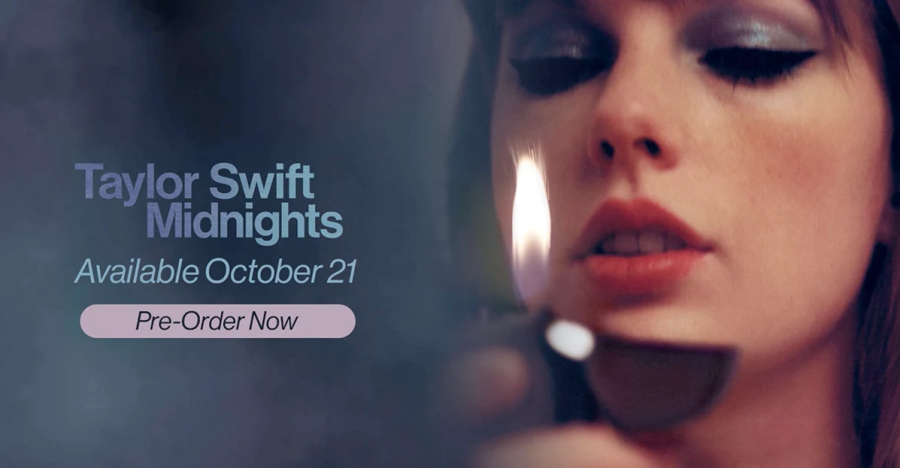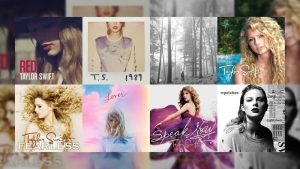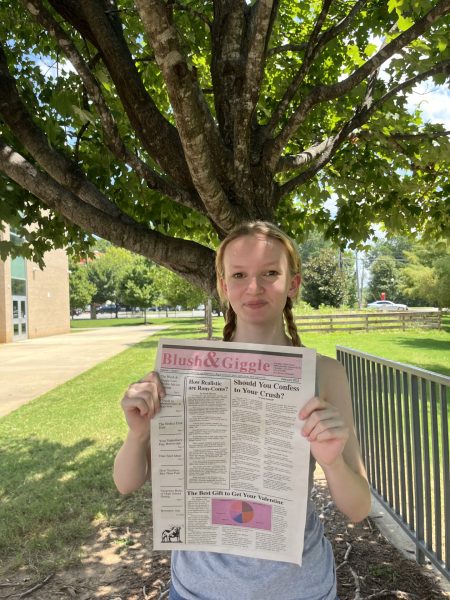Swift’s Album “Midnights” keeps Chamblee Students Up
Photo Courtesy of Taylor Swift’s online store
Advertisement for the pre-order of Taylor Swift’s new album, “Midnights
November 14, 2022
Dropped silently and without prior notice, Taylor Swift’s signature remakes were a kind of artistic rebirth: with a new approach to lyrics, mixing, and theme, they earned her new fans and almost unanimous admiration. Midnights, Swift’s latest expansion, was different—hinted at on Swift’s social media for weeks and the subject of much anticipation, the fresh release is still controversial in the minds of both Swift’s fans and detractors.
“I don’t like it because it sounds so much like her other albums that it’s not interesting,” said Rachel McGuinness (‘24).
The album, based on words and conversations Swift had at midnight, utilized a mix of sounds and feelings for its thirteen tracks. The names of the tracks were revealed one by one before the album’s drop on Swift’s TikTok in a lottery number-style drawing. But Swift’s diversion from her typical surprise drops proved to be both a positive and a negative; while its vinyl broke pop star Harry Styles’ record with over 400,000 sales in the first week, many fans found the album to not live up to expectations.
“With Midnights she made everyone get excited. Everyone stayed up late and pre-ordered and [it wasn’t good],” said Shruti Nainwal (‘24).
Midnight’s most-cited faults include its pop-esque sound and the lack of cohesion between tracks. Another letdown was the album’s fourth track, “Snow on the Beach”, featuring Lana Del Rey. The announcement of the collaboration was a surprise to many fans due to speculations of fights between the artists—but the track was not the breakthrough it appeared to be. Del Rey had no solo verses or lines, instead singing over Swift for the majority of the song.
“Yeah, ‘Snow on the Beach’ was a huge letdown since Lana had no lines […] she was just backing vocals,” said Emma Huitt (‘25).
The track also faced criticism for its mixing and sound, a factor that received negative attention across the whole album.
“I think I don’t like it because it sounds so much like her other albums that it’s not interesting anymore,” said McGuinness.
What set Swift’s “silent releases”, including Folklore and Evermore, apart in her fans’ minds was their aspect of surprise—their re-release was prompted by a contract that took away Swift’s profits after a certain deadline. This spirit of rebellion carried over to the sound and lyrics of the albums, earning her more fans and admiration.
“It’s not a new era. It’s just like a mix of all her other eras. Yeah. So that was disappointing because I wanted something different. But I’ll still listen to it,” said Nainwal.
Some aspects of Midnights were quite different from her past releases, but not necessarily in a positive way.
“Vigilante Shit is so bad […] she’s cursing so much more. [Before] it was rare. Now she’s cursing in the song title,” said Huitt.
But the album was welcomed by some fans. So far, its sales are on par with Swift’s older releases, especially for physical copies such as the vinyl. The album’s lyrics were also praised for their signature poetic style, a hallmark of Swift’s music.
“I would say [the album] is a 9.5,” said Maggie Lawley (‘25).
Only days after the main album’s release, Swift also released a set of extra songs, cleverly titled the “3 A.M. Edition”. These bonus tracks were received considerably better by fans, prompting questions as to why they were released separately.
“She released new [tracks]. They need to be on the actual album,“ said Huitt.
Although the album is by no means universally accepted, its success is undebatable; and at the end of the day, Swift’s fans are still eagerly awaiting her next release.
“[She’s] still good. I think if it was a normal amount of hype, then [the album] would have been good’,” said McGuinness “It’s Taylor Swift.”














